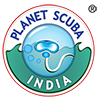- NEW: Australian official says research possible without killing whales
- Australia has filed suit with international court over Japan’s whaling practices
- Japan says decision to head to court “regrettable”
- International moratorium allows hunting whales for scientific reasons
DIVE BUDDY
Always wondered why you can’t dive alone?
Buddy diving is the use of the buddy system by scuba divers and is a set of safety procedures that improve divers’ chances of avoiding or surviving accidents in or underwater by diving in a group of two or three divers. When using the buddy system, the group dives together and co-operate with each other, so that they can help or rescue each other in the event of an emergency.
In recreational diving, a pair of divers is the best combination in buddy diving; with threesomes, one of the divers can easily lose the attention of the other two. Groups with more than three divers are not using the buddy system. The system is likely to be effective in mitigating out-of-air emergencies, non-diving medical emergencies and entrapment in ropes or nets. When used with the buddy check it can help avoid the omission, misuse and failure of diving equipment.
As JJ, a dive instructor for ten years puts it, having a buddy offers not only security but also a partner in crime. He fondly recounts, “Sometimes, you and your buddy are together and the rest of the group is at some distance and we see a shark zip by together and the others miss it and we get to tell the rest when they catch up-We just saw a Shark!” Your buddy is the only other person who will truly understand what you feel in that moment when you see that shark or manta together.
Have any such stories with your buddy?
Send them right in!
SIPADAN
This “untouched piece of art”, as it was named by the late Jacques-Yves Cousteau, is amongst the top 3 dive destinations in the world.
Sipadan is most famous for diving, thanks to the abundance of marine life in the area. Normally, rare diving scenes are frequently seen in the waters around Sipadan: schools of green and hawksbill turtles nesting and mating, schools of barracuda and big-eye trevally in tornado-like formations, pelagic species such as manta rays, eagle rays, scalloped hammerhead sharks and whale sharks.
With nearby islands of Mabul and Kapalai Islands there are hundreds of dive sites to choose from. Nothing beats scuba diving in Sipadan. If you can name it, then there’s a dive site in the area that has it; from macro life to pelagic, wrecks to wall dives, coral gardens teeming with a rich diversity of corals and fish, underwater caves where sleepy sharks go to chill out, and caverns where turtles go for eternal rest… Sipadan diving has it all and then some.
Sipadan is also famous for macro. If your eyes are good enough, you are likely to spot some of the most beautiful nudibranchs and shrimps on every single dive. But it is not the only incredible world; you will also see turtles, barracudas, stingrays, cuttlefish, reef sharks, bump head parrot fish, moray eels, jack fish, napoleon wrasses and lion fishes, just to mention a few.
Besides all that there is to explore in the parallel world underwater, the island itself seems like the kind of place Shakespeare was at when he wrote The Tempest. It’s the kind of place that makes you want to be stranded there!
We urge you to join us as we explore this magical island in July.
Planet Scuba India promises you the experience of a lifetime!
Check the gallery ….let the pictures give you an idea of what we’re talking about.
